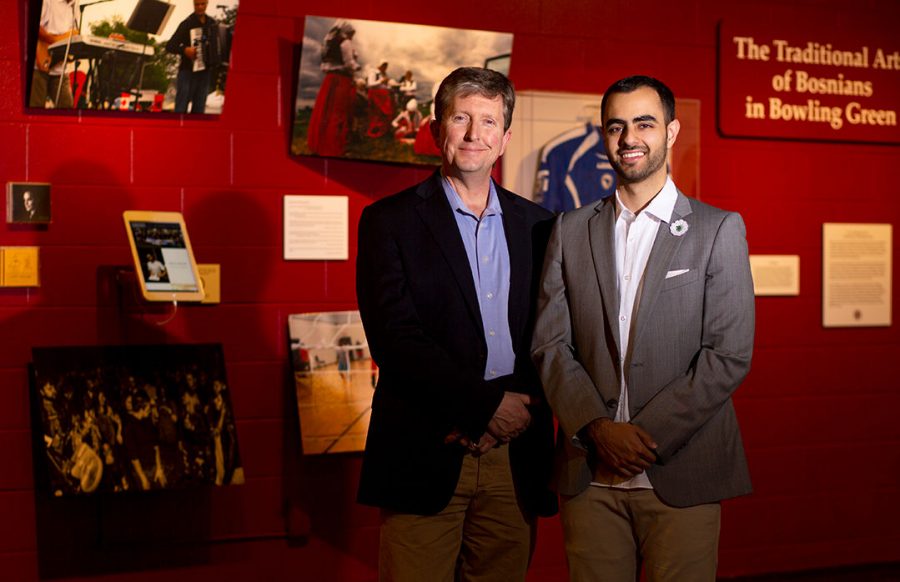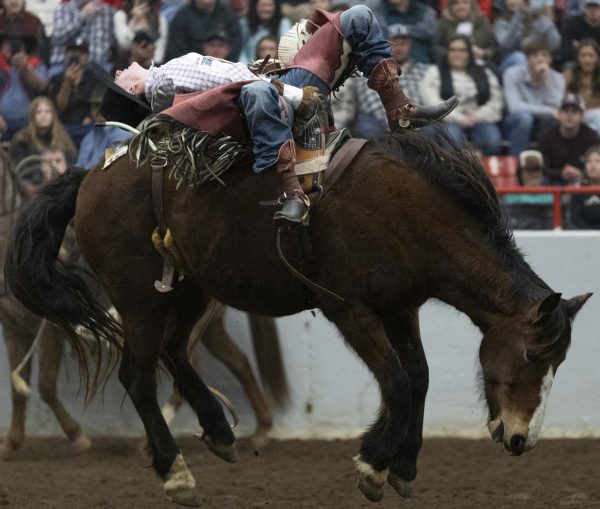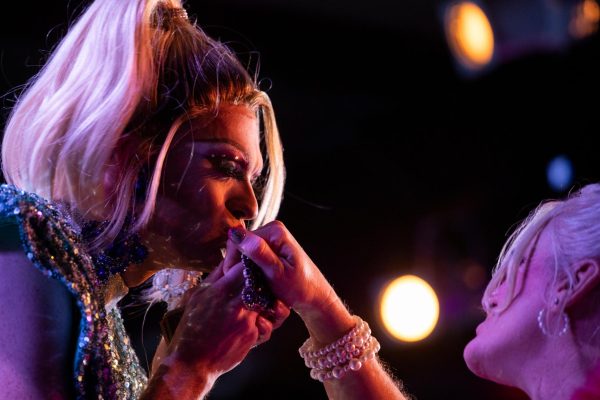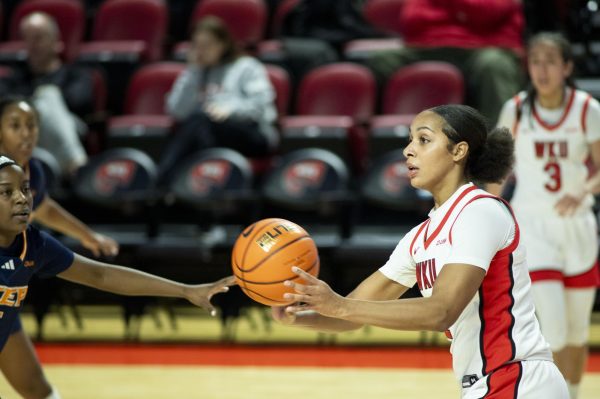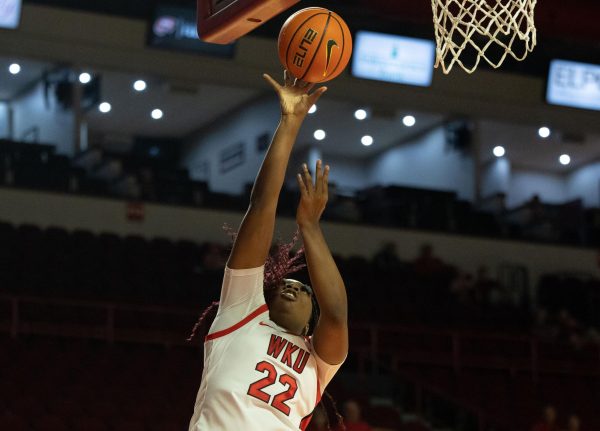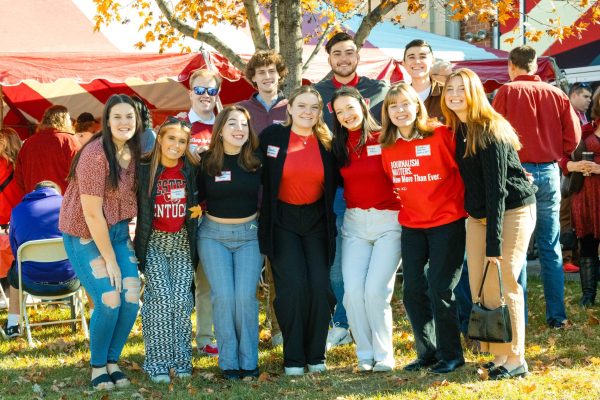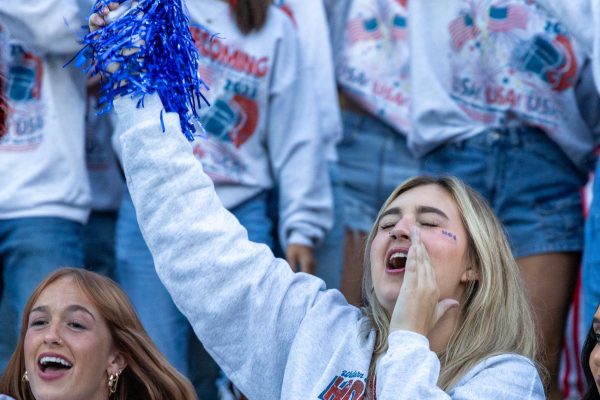Sponsored Content: Last call to see Kentucky Museum exhibit ‘A Culture Carried: Bosnians in Bowling Green’
April 30, 2019
Large dark green trucks transported Senida Husić and her family from the United Nations safe zone in Potočari, a village in the Srebrenica municipality in Bosnia, to the next safest town of Tuzla in 1993.
Husić could hear the screams and gunfire in the background. And just as they were about to depart, Husić’s grandfather was separated from the family. The Serbian forces said he had to be transported by a different vehicle.
That was the last time the Husić family saw their grandfather.
Dead bodies lined the side of the road as they traveled. Individuals captured by Serbian forces kneeled in open fields with their hands around their backs. This is what defined Husić’s childhood until the age of 12 when her family finally settled in Bowling Green in 1998.
The war in Bosnia and Herzegovina lasted from 1992 to 1995. Over 8,000 men and children were murdered and buried in mass graves.
It’s estimated that Bowling Green is home to more than 6,000 Bosnians, according to the Kentucky Museum and Kentucky Folklife Program.
Folklorists at WKU have collected and shared personal stories from Kentucky communities for over 100 years. The Kentucky Folklife Program’s collaborative Bosnian Oral History
Project and exhibit, “A Culture Carried: Bosnians in Bowling Green,” have been instrumental to sharing the diverse stories of those who now call Southcentral Kentucky “home.”
On Friday May 3rd, community members will have a chance to join the WKU folklorists and Kentucky Museum staff for a final tribute event before the exhibit comes down.
Denis Hodžić, a Bosnian-American graduate student at WKU, left Germany in 1999 with his mother and settled in Bowling Green. Hodžić’s mother had fled Bosnia in 1992.
“The word ‘Bosnian’ is the word that describes American,” Hodžić said. “It’s Bosnian American. So, while my roots and my heritage comes from that country, I am an American citizen. This is my home.”
In an effort to share the stories within the Bowling Green community, Brent Björkman, director of the Kentucky Museum and Kentucky Folklife Program, led the creation of a collaborative oral history project and exhibition between the Kentucky Folklife Program, Department of Folk Studies and Anthropology, the Kentucky Museum and the Bosnian community in Bowling Green called “A Culture Carried: Bosnians in Bowling Green.” The construction and the traditional arts programming for this exhibit was made possible by a National Endowment for the Arts grant.
“Our mission at the Kentucky Folklife Program is to document, present and conserve traditional arts and cultural heritage of the commonwealth,” Björkman said.
The documentation is performed by recording oral histories with community collaborators, which is a central method folklorists use. The Folklife Program conserves these stories by placing them in special collections for researchers, family members and Bosnian Americans to experience years later.
“I want to create understanding for people — cultural understanding for people is what’s really important to me,” Björkman said.
The second part of the Kentucky Folklife Program’s mission is to “present” its research back to the collaborators it work with to validate what is important to them and to share it further with the greater Bowling Green community, Björkman said.
Hodžić and Björkman’s relationship was what spurred the creation of the project. Hodžić got involved with the Kentucky Folklife Program and the Kentucky Museum in August 2015. Björkman and his Kentucky Folklife Program and Department of Folk Studies and Anthropology colleagues taught Hodžić along with a few of his friends the deep listening and interviewing processes folklorists use, and they began meeting once a month to plan the flow of the exhibit.
“For me, it didn’t really matter where in my life I was –– high school, undergraduate, graduate career, it didn’t matter,” Hodžić said. “This is something that is really central to my heart.”
The exhibit opens up to a maroon wall holding the decorated slippers a Bosnian woman may wear in her household, a complete set used for ćejf, a form of coffee central to Bosnian heritage, and a Srebrenica crochet flower honoring those who died in the Srebrenica Massacre on July 11, 1995.
The flow of the exhibit stems from individual stories of the survivors who later settled in Bowling Green and transitions into the larger story of refugees in America carrying these two cultures.
After the stories of three individual Bosnian refugees, images of the Srebrenica Massacre float in, merging with current efforts happening in Bowling Green like the Walk to Remember event, in which Bowling Green community members walk 8,372 steps to commemorate each life lost in the massacre. The exhibit also features foodways uniting the culture like ćevapi, a Bosnian smoked sausage and drink like ćejf that is shared by the families. Traditional dress decorated with deep, vibrant colors and the tangible praying devices used by the three dominant religions in Bosnia are also represented.
The final portion of the exhibit focuses on the young Bosnian professionals living with one foot in each world.
“Bosnia is my birth home but my true home is Bowling Green,” Husić said.
Husić’s family settled in Bowling Green in 1998 when she was 12 years old. She has spent the last 20 years in Bowling Green, which is the single longest place she has lived in her life.
“My first 12 years of my life we moved around so much,” Husić said. “I didn’t have a proper home. I didn’t have proper friends and then school to go to. It was just like a continuous state of chaos, and then when I moved to Bowling Green; we got a home.”
Although she doesn’t intend to move back to her birth country, she said she never intends to turn her back on the country that made her who she is today.
“I wouldn’t be the person I am today if it wasn’t for Bosnia,” Husić said. “And I wouldn’t be the individual I am today without the experiences, as painful as they are.”
The experiences of these individuals have aided in cultural understanding not only to the Bowling Green community but to WKU’s Bowling Green campus.
Kate Horigan, an assistant professor in the folk studies department and collaborator in the Kentucky Museum’s Bosnian exhibit, said she has graduate and undergraduate students come to learn about ethnography, cultural diversity and Islam utilizing the exhibit.
“What I do is try to understand how people use traditional culture and how people use narratives and the stories that they tell to recover from violence and conflict and disaster,” Horigan said. “I have just been blown away by the strength of this community and the warmth and got to make some new friends and it’s just been a really really awarding and rich learning experience.”
The Kentucky Folklife Program’s Oral History Project will be one portion of the exhibit that continues, as well as the new traveling exhibit allowing the Kentucky Folklife Program to educate communities all over Kentucky.
The Kentucky Folklife Program and Kentucky Museum will host the Bosnian American Heritage Celebration May 3 from 6 to 8 p.m. celebrating the success of the exhibit and thanking the collaborators who helped on the project with Bosnian food, music and stories.

